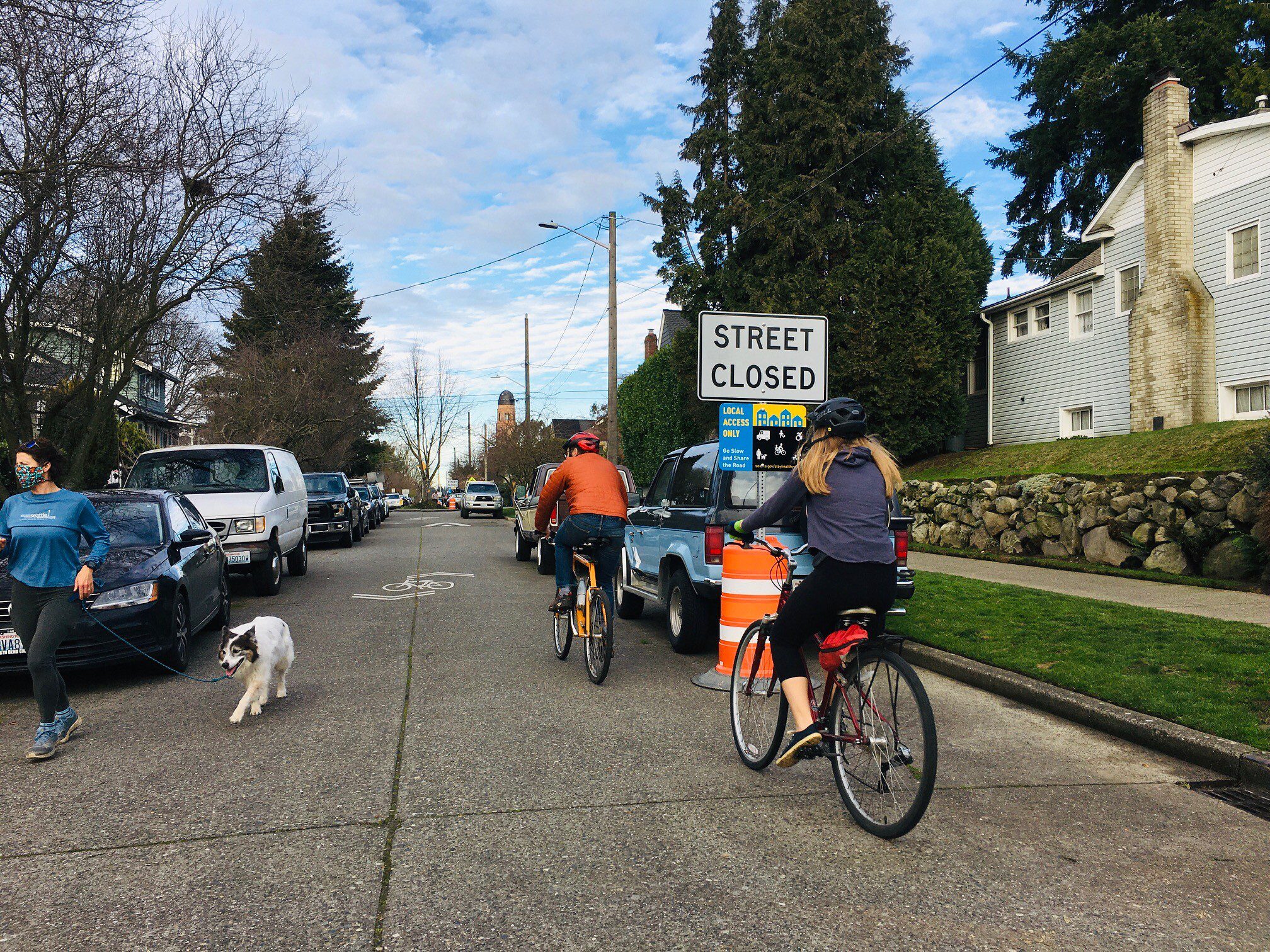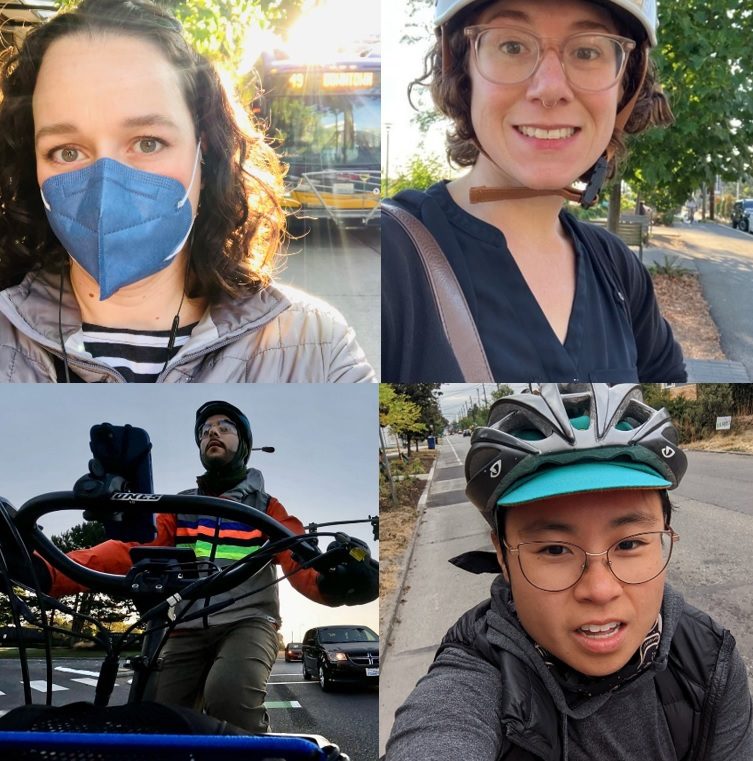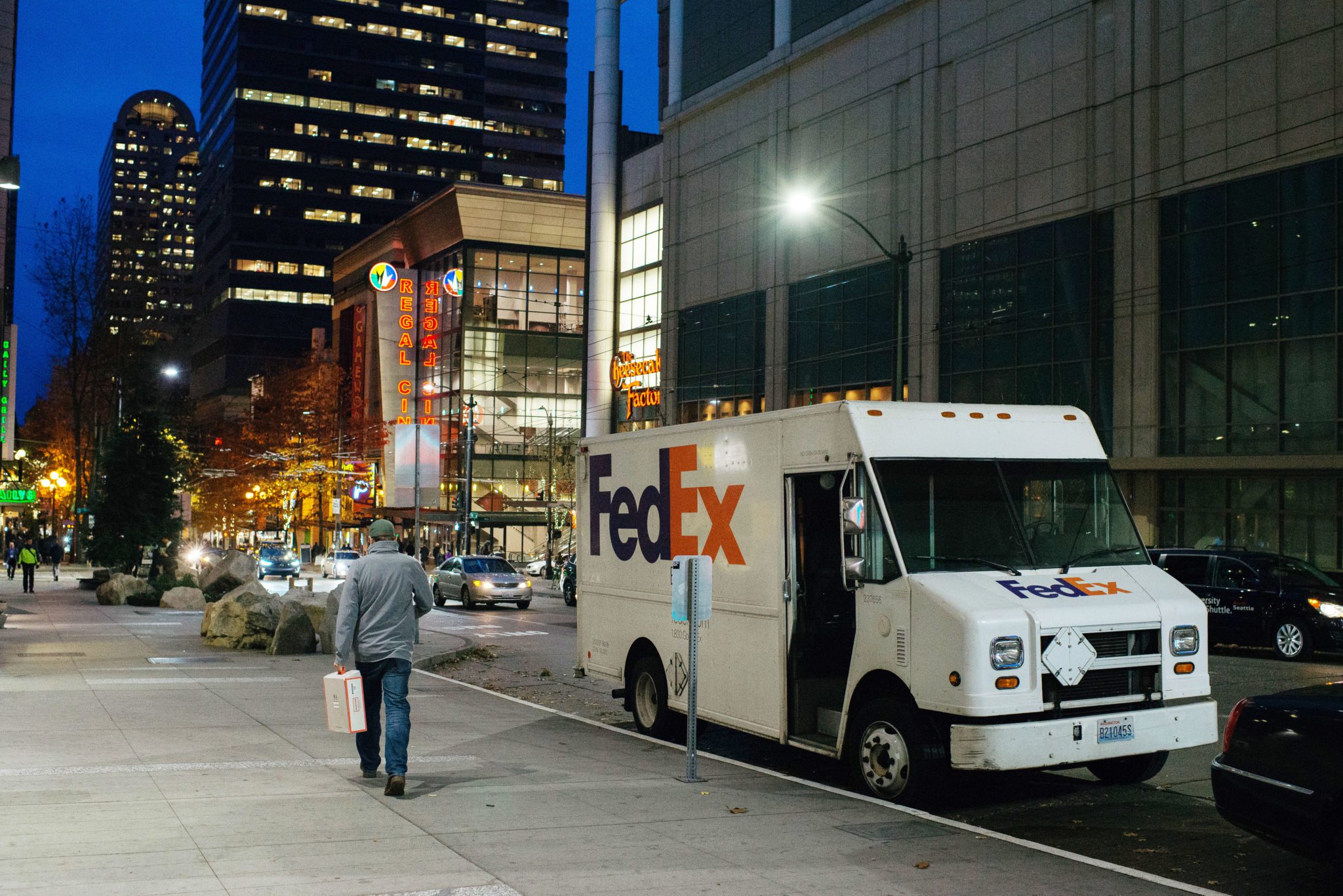 Transit islands, and protected bike lanes. Photo Credit: SDOT
Transit islands, and protected bike lanes. Photo Credit: SDOT At-a-glance
- SDOT is proud to release our first-ever Climate Change Response Framework (CCRF), our vision for reducing transportation emissions and making it easier for Seattleites to choose more efficient, shared, and sustainable travel options.
- The framework describes the need to accelerate all the climate work we are already doing, while identifying other new ideas to further move the needle.
- The CCRF is a critical input into the Seattle Transportation Plan (STP), the 20-year vision for our future transportation system.
- Climate response will take all of us. Let’s take the next step together.
We are proud to release our first-ever Climate Change Response Framework (CCRF)! This will be our guide to reducing transportation emissions and making progress on the goals and strategies contained in Mayor Harrell’s OneSeattle Transportation & Climate Justice Executive Order.
At SDOT, we have a responsibility to make Seattle a more walkable, bikeable, transit-friendly, and climate-resilient city. Since transportation emissions are the number one source of climate pollution in Seattle, we have a big role to play to mitigate the local effects of climate change.
Our role in climate change response is already underway through our policies, programs, and the way we design our streets. The Climate Change Response Framework (CCRF) lays out SDOT’s vision to accelerate this work to reduce transportation emissions, by making it easier to choose more efficient, shared, and sustainable transportation options.
This framework acts as a critical input into the Seattle Transportation Plan (STP), our 20-year vision for the future of our transportation system. As we developed the plan, we heard that you want us to be bold and transformative as we evolve our system to meet the moment through urgent climate response. The STP will work hand in hand with the One Seattle Plan to create a healthy, sustainable future for Seattle. These efforts will have benefits well beyond reducing climate pollution, creating safer streets and improving air quality and health outcomes, especially in those neighborhoods disproportionally impacted by climate change.
CCRF focus for Climate Response
- Creating a better climate future, together We are already working on solutions and have many of the tools needed to reduce our climate impact. Now is the time to build and accelerate our climate work, especially to benefit historically underserved communities who are already facing disproportionate climate impacts like extreme heat and more frequent urban flooding. A response centered on climate justice requires us to co-create solutions with community, including our community-based organizations and the Transportation Equity Workgroup.
Collaborating with Members of the Transportation Equity Workgroup
In 2023, the Transportation Equity Workgroup met with SDOT staff on several emergent topics, one of which was climate change. Discussions centered on the nexus between climate response and our core values of equity and safety, and how to connect the dots within our communities. We used this feedback to inform the cross-cutting nature of the CCRF and will continue to focus on communicating with and allowing local communities to shape projects so that co-benefits of climate investments are realized equitably.

- Making short trips safe, affordable, and zero-emission Most emissions in Seattle come from short trips under 3 miles. We are working with communities to design our streets and provide programs to make it easy and safe to take transit, bike, roll or walk these short distance trips much more often.
SDOT receives $1.2Million to advance climate goals
The City of Seattle was selected by the U.S. Department of Transportation (USDOT) to receive a $1.2 million grant under the Rebuilding American Infrastructure with Sustainability and Equity (RAISE) program to plan for low-pollution neighborhoods that will reduce transportation emissions in our communities.

- Make it more convenient, reliable, and affordable to ride transit Creating safe, sustainable, reliable, and convenient connections to buses, light rail, and the streetcar is a primary focus of our climate response. Transit offers the best sustainable option for longer trips and will become even more convenient as new light rail services launch and bus services are redeployed to better get you where you want to go.
We’ve made taking transit safer and more reliable from Ballard to the U District
During the past nearly 2 years we’ve partnered with King County Metro to improve transit reliability, reduce transit travel times, and enhance pedestrian safety and access along the Route 44 corridor in Ballard, Phinney Ridge, Wallingford, and the U-District.
- Enable use of climate-friendly travel choices We will continue to expand programs that support people using shared and zero-emission travel options including walking, biking, rolling, and taking transit. These options improve health outcomes, make streets safer, activate local neighborhood economies, save you money, and reduce climate pollution.
SDOT participates in National Week Without Driving
SDOT has participated in the annual Week Without Driving since its inception in 2021. The goal is to better understand the challenges faced by people who are unable or choose not to drive face in navigating their everyday lives.
The 2023 Week Without Driving is taking place now, October 2-8, 2023. Stay tuned from stories from SDOT leadership and staff throughout the week.

- Improve freight efficiency Moving goods and delivering services more effectively and in climate-friendly ways not only helps the environment, it’s also good for business by improving how they serve their customers. We want to create solutions alongside our businesses and freight partners to create the best options for everyone.
SMART (Strengthening Mobility and Revolutionizing Transportation) grant supports digitizing the curb to make deliveries more efficient
SDOT is working closely with our partners at the UW Urban Freight Lab and the Open Mobility Foundation to establish new commercial vehicle permit policies and pilot a digital permit. We aim to reduce congestion and vehicle circling for parking, improve access to the curb, and promote more sustainable forms of delivery.

- Electrify Seattle Some trips need to be taken by car or truck. Our goal is to encourage the use of electric vehicles for as many of those trips as possible. We are leading by example with our own fleet electrification, and by partnering with other city departments, organizations, and communities to install charging infrastructure and offer innovative and equitable incentives.
City of Seattle Announces New Pilot Program to Incentivize Heavy Duty Truck Electrification
New Electric Trucks Pilot aims to support local truck drivers’ transition to electric freight vehicles and improve air quality in the port-adjacent communities of the Duwamish Valley where heavy freight activity is one of the largest contributors to air pollution.

Read the Climate Change Response Framework to learn about the full set of strategies to reduce the climate impact of our transportation choices.
How can you be a part of Seattle’s climate solution?
Supporting better, more efficient access to sustainable modes will create the biggest shift in our transportation culture and reduce climate pollution. Responding to climate change will take all of us, and we invite you along to take the next step together.
- Think about the trips you take throughout your day. Could you walk, bike, roll or take transit instead of driving for any of them? How can you Flip Your Trip to be a part of the climate response with us?
- Tell your family, friends and neighbors about all the sustainable travel options available to them! And then, take them along for the ride!
- Join us in the conversation of how transportation impacts climate for you and your community. Bookmark this page to learn about the latest news on SDOT’s climate response.
- Most importantly, don’t despair! Climate change can’t be solved by just one person, it will take all of us doing our part to make a difference. Each decision matters and you can be a part of the solution – one trip at a time.